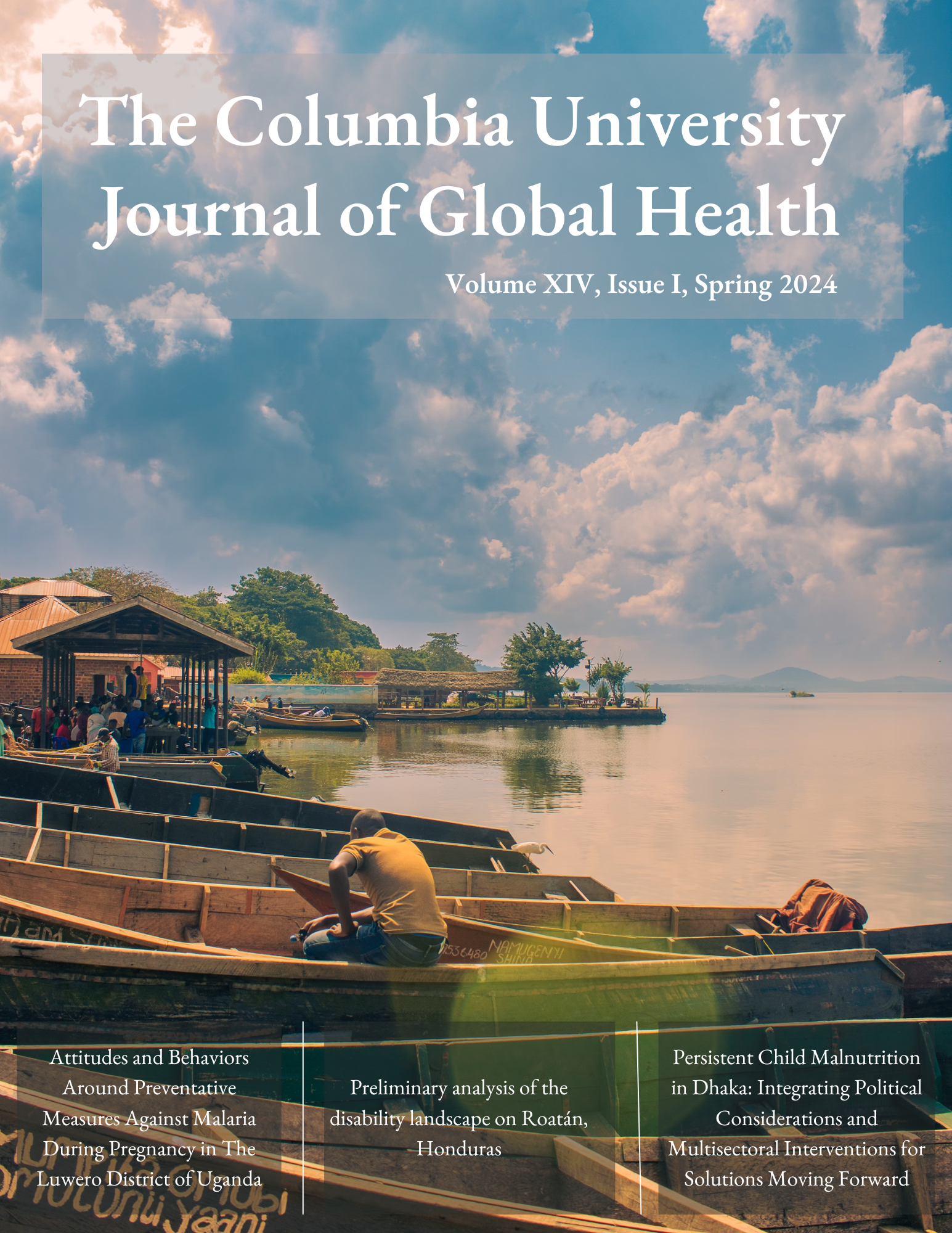Attitudes and Behaviors Around Preventative Measures Against Malaria During Pregnancy in The Luwero District of Uganda
Main Article Content
Abstract
Background: In Uganda, the rate of malaria in pregnancy ranges from 8.9-50% depending on the level of transmission within the region. It is estimated that malaria may contribute to 8-14% of low birth weight, 3-8% of infant mortality, and 3-15% of maternal anemia. There is limited information on the attitudes and behaviors of pregnant women related to malaria prevention-health impacts for the child, including infant and maternal death.
Methods: A cross-sectional study was conducted in June of 2023. A structured interview was used to collect data on demographics, attitudes, and preventative behaviors related to malaria during pregnancy. Interviews conducted in participants’ homes took approximately 50 minutes. Descriptive statistics were run for demographic data. Chi-squared test and Pearson Product Moment Correlation with a significance level set at p < 0.05 were conducted to test relationships between variables of interest.
Results: Data were collected from 63 women with a mean age of 37. All women had at least one pregnancy resulting in a live birth. Almost one-third of women (31.7%, n = 20) reported getting malaria during their most recent pregnancy. Most respondents (82%, n = 52) received prenatal care and 87.3% (n = 55) used at least one prevention measure against malaria during their last pregnancy. For the participants that reported not protecting themselves (12.7%, n = 8) it was found to be statistically significant in preventing malaria (χ2 = 9.744, p = .008). Bed net use was found significant in preventing malaria during pregnancy (χ2 = 7.113, p = .029) and SP/Fansidar (χ2 = 46.534, p = < .001) during their most recent pregnancy. Receiving prenatal care was found to be significant (χ2 = 24.186, p = <.001). Education level was also found to be significant in to whether women received prenatal care (χ2 = 14.634, p = .023) and in the attitudes that pregnant women should receive malaria treatment during pregnancy (χ2 = 17.084, p = .009).
Conclusion: This study sheds light on the attitudes and behaviors surrounding preventative measures against malaria during pregnancy among a sample of women in rural Uganda. The study emphasizes the need for targeted health campaigns to promote bed net use, addressing barriers to IPTp implementation, and advocacy for improved policy change and antenatal care attendance. Improving access to prenatal care services, particularly in rural communities, is needed to keep women and children healthy.
Implications for Practice: Recognizing the challenges related to policy implementation, there is a pressing need to advocate for policies that support effective prevention strategies during pregnancy. Advocacy efforts should be directed towards improved policy implementation and encouraging regular antenatal care visits.
Article Details

This work is licensed under a Creative Commons Attribution 4.0 International License.

